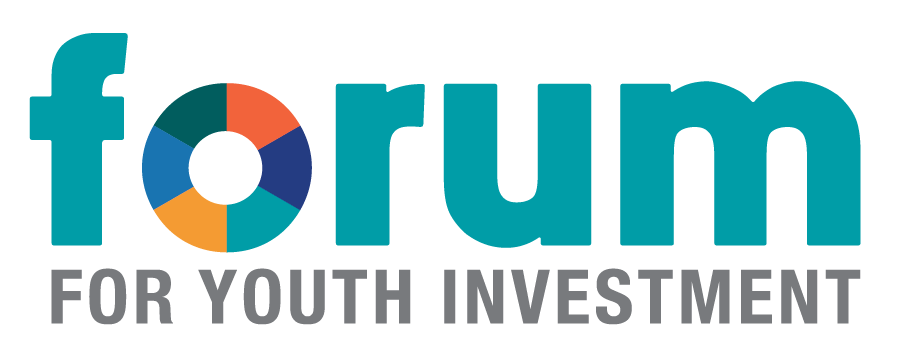The Five Tenets of Successful Cross-System Collaboration
November 8, 2023

In the Youth Development Ecosystem, multiple systems (education, workforce, community-based youth development programs, child welfare, youth justice, health, disability, and human services) all play interconnected roles in supporting young people. Outcomes for young people depend on these systems working together effectively; yet too often, these systems operate in silos, governed by different rules, described by different languages, funded through different mechanisms, and often operated by a combination of different levels of government as well as non-governmental organizations. More collaboration across systems is key to breaking down these silos and creating an effective ecosystem approach. This can be a daunting task, especially given the strains many agencies, organizations, and the people they serve are under.
Through the years, experience and research have demonstrated that while cross-system collaboration isn’t easy, it is possible. Lessons learned from evaluating those that have been successful point to key elements that contribute to the collaboration’s functioning and the outcomes it is able to achieve. Below is a brief overview of these tenets.
- Have a shared vision and goals. Agencies, organizations, and individuals have many demands on their time. For participants to be motivated and committed to participating, the collaboration needs to have a clear purpose that is seen as beneficial to all. As the coalition gets formed, members should agree on:
-
- The population to be served. The youth population might be narrowed by age group, demographic or other characteristics, geography, etc.
- The issue or problem the collaboration will address. This likely will include short- and intermediate-term goals; for example, while the long-term goal might be “ensure youth have quality education regardless of other system involvement,” which might include short-term goals like “ensure students’ IDPs are transferred between schools in the community and residential placements.” For a new collaborative, identifying a relatively well-defined and “solvable” short-term problem or task can provide an early “win” and serve as a proof of concept to administrators, policymakers, directly impacted youth and parents and others that cross-system collaboration is worth the time and effort. It also can provide a lower-stakes opportunity to develop trust and working relationships.
- Desired outcome. All participants might agree that the overarching vision is for young people to reach their fullest potential in education, work, and life; but this is likely too sweeping to build coalition activities around. Developing “SMART” (Specific, Measurable, Achievable, Relevant and Time-Bound) goals will provide direction and reduce “mission creep.”
- Include multiple perspectives and voices. The call for improved cross-system collaboration can come from many sources, which can range from a Governor’s office seeking to align agency efforts, to a group of families frustrated with navigating multiple systems. All those involved in the system – as administrators, direct service providers, the youth and their families – bring different perspectives and experiences. And within these groups, there are differences in life experiences, geography, cultural backgrounds, etc. Those who are directly impacted by the collaborating systems are experts in their own experiences and can provide the nuanced understanding of the impact of policies and practices that computer data systems fail to capture.
- Communicate clearly, regularly, and inclusively. Developing robust communication mechanisms pathways that include all those involved are necessary for the following reasons:
-
- Ensuring that roles and responsibilities are clearly agreed upon and understood. Having both formal and informal communication channels that can include shared project management tools, accessible meeting notes and/or recordings, and “open door” policies between participants can reduce the likelihood of misunderstandings that can undermine trusts. Part of communications processes can be the development of written agreements on decision-making, conflict resolution, etc. that can be revisited at regular intervals.
- Shared understanding of the needs and limitations of collaboration participants. Participants in a cross-system collaboration wear other hats as well. Whether they are part of a state agency or non-profit organization, individuals will have other demands on their time and likely will be pulled in different directions. While there may be pressure to jump into the collaborative’s “real work” of improving system integration, creating opportunities for participants to better understand each other’s work and how this might affect their participation in the collaborative efforts will also build trust and reduce potential friction as the collaborative matures.
- Reinforcing equity. Some system leaders may see each other regularly and have informal communications that, while expedient, can lead to others, such as community stakeholders being left out of the loop. This can impact trust. Mutually agreed-upon communication mechanisms that allow all stakeholders to not just be informed but to be actively engaged are critical. Some collaborations have found that having a “neutral” convener – someone who is outside of the involved systems – can be helpful, both in ensuring regular and equitable communication, but also in moving the initiative forward generally.
- Create buy-in at all levels. Organizational participants need to have the authority to make decisions on behalf of their agency or department. How successful the innovations agreed upon by decision-makers are will depend on their being understood and supported by those responsible for implementation. Feedback from those not “at the table” can help participants understand what on-the-ground barriers might exist. Many of those providing or managing direct services – as well as those receiving services – will have their own ideas about how to improve policies and practices, so providing avenues for these to be considered and incorporated will increase their sense of ownership in the results. It will also help participants better understand what changes to staffing, information technology, facilities, etc. might be needed, which in turn will better inform timelines and costs.
- Measure impact. The sustainability of cross-systems collaboration depends on its being able to show progress in reaching the identified goals and being able to continuously improve. At the program level, the Forum promotes systems of Monitoring, Evaluation and Learning (MEL); this same concept can be applied to the work of the collaborative. This will involve:
-
- Conducting regular collection of information on key activities defined by agreed-upon metrics. This requires an understanding of each system’s ability to collect and share data.
- Evaluation: Engaging in periodic assessment and analysis of ongoing and completed efforts.
- Learning: Reflecting on the information generated through monitoring and evaluation and using it to make any course corrections necessary.
When measuring impact, it’s imperative to consider equity. This means assessing how well the collaboration includes the perspectives of everyone affected by its efforts and how much influence they have in determining its success. While it’s crucial to evaluate the collaborative’s performance, it’s equally important for participants to remain focused on the ultimate goal of benefiting youth and families in the long run.
With the workforce challenges many systems are currently experiencing, dedicating the time and effort needed to participate in cross-system collaboration may seem like a luxury. However, improving outcomes for young people hinges on well-functioning ecosystems, which cannot exist when systems are siloed. For this reason, engaging in well-planned, appropriately structured, and resourced collaboratives is imperative to ensure systems are giving youth the best opportunity to thrive. One of the Forum’s core strategies is to support leaders and practitioners as they work to improve the collective impact of their systems, and we look forward to deepening our involvement in this area in the near future.
Bibliography of Resources on Cross-System Collaboration
Achieving Cross-System Collaboration to Support Young People in the Transition Years: A Tip Sheet for Service Providers. Pathways to Positive Futures, 2016. Provides actionable steps to help agencies develop collaborative processes that include active participation by young people.
Building a Foundation for Family Well-Being: Creating a Roadmap for Cross-System Investments. American Public Human Services Association and Association of State and Territorial Health Officials, 2021. Provides state and local examples of inter-agency collaboration and provides examples funding sources that could help support a continuum of prevention and strengthening services for youth and families.
CoC and ED Collaboration Case Studies: CoC and District of Columbia Schools Partnership Focuses on Data. U.S. Department of Housing and Urban Development, 2016. Provides lessons learned from D.C. in their creation of a state longitudinal education data system (SLED) that receives data from homeless education liaisons, the Department of Human Services (SNAP), and the health department, to help create a coordinated model for youth as they move through different community service systems.
Creating and Sustaining Collaboration to Support Families in Child Welfare with Co-Occurring Issues: An Administrator’s Handbook. Capacity Building Center for States, 2017. Provides tools for agencies looking to build and sustain collaborative partnerships, including a Readiness assessment.
Cross System Collaboration: A Fresh Look at Working Together: Increasing Access to Quality Early Learning – State Examples. Administration of Children & Families, U.S. HHS, 2011. Builds on findings from a convening of state and local leaders to identify new strategies to overcome collaboration challenges.
Cross-System Collaboration and Engagement of the Public Health Model to Promote the Well-Being of Children and Families. Journal of the Society for Social Work and Research, 2019. Addresses the need to shift from deficit-oriented, siloed strategies in U.S. youth-serving systems towards ones that are integrated and strengths-based.
Education and Child Welfare System Efforts to Improve Educational Outcomes for Youth in Foster Care: Identifying Opportunities to Enhance Cross System Collaboration. RAND Corporation, 2023. In this report, the authors explore the implications of fragmentation and misalignment for cross-system collaboration between public education and child welfare systems.
Evaluation-of-Cross-System-Collaboration. The Chadwick Center, 2013. Examines different approaches to cross-system collaboration in youth-serving systems over time.
Five Conditions of Collective Impact. Tamarack Institute, 2017. Describes the conditions necessary for a group of actors from different sectors to work together towards a common agenda.
From Research to Practice: Factors that Facilitate Successful Cross System Collaboration. Rutgers School of Social Work, 2016. Discusses inter-agency collaboration as an intervention to improve outcomes for youth in the child welfare system who are exposed to domestic violence.
Partnering for Success: Factors Impacting Implementation of a Cross-System Collaborative Model Between Behavioral Health and Child Welfare. Administration and Policy in Mental Health and Mental Health Services Research, 2021. Shares findings from an evaluation of an initiative to promote greater collaboration between mental health providers and the child welfare system.
